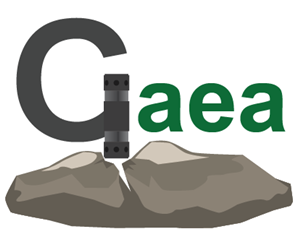What are the precautions when drilling down-the-hole drilling rigs?
Related products Link:
The down-the-hole drilling rig is an impact rotary drilling rig. Its internal structure is different from that of a general rock drill. Its gas distribution and piston reciprocating mechanism are independent, namely the hammer. The front end is directly connected to the drill bit, and the rear end is connected to the drill rod. When rock drilling, the hammer dives into the hole, and the piston (hammer) in the hammer reciprocates to strike the shank through the gas distribution device (valve), so that the drill bit impacts the rock at the bottom of the hole. The high-speed rotation of the hammer in the hole is realized by a separate rotation mechanism, that is, a motor or a pneumatic rotating device outside the hole, and a drill rod connected to the back end of the hammer. The rock dust generated during rock drilling is flushed out of the hole by the wind water mixed gas. The mixed gas is injected into the hammer through the center of the drill pipe by the powder discharge mechanism, and then enters the bottom of the hole through the air groove on the hammer cylinder.

DTH drilling: There are two types of drilling rigs and drilling rigs. Drilling rigs are divided into open-pit drilling rigs and underground drilling rigs.
The correct operation method of down-the-hole drilling rig:
One.. Counterpoint
1. In special circumstances, the hole position deviation should generally not exceed 0.2 meters. The maximum must not exceed 0.4 meters. The distance between the holes, the row distance and the azimuth angle should be as consistent as possible.
2, cut off the power of the walking motor.
3. Turn on the power of the working system.
4. Turn the master switch of the electrical console to the manual position. Take out the wrench on the drill support.
5. Raise the drill slightly. Stop when the drill bit is about 30 mm from the ground.
6. Lower the drill slowly.
7. Install the dust hood.
II. Drilling and drilling of down-the-hole drills
1. Turn on the exhaust fan.
2, start the slewing mechanism.
3. Move the hammer control valve to the half-open position.
4. Lower the drill tool. When the drill bit touches the rock, turn on the down button of the lifting and pushing mechanism. The hammer will start to work and make a hole. If stuck or deviated, the drill should be lifted immediately; repeat the above sequence until the hammer starts to drill normally.
5. Open all the control valves of the hammer or turn them to the proper opening position. According to the condition of the rock.
Move the master switch to the automatic position.
6. Stop lowering the drill tool. Push the control valve handle to the pressure regulating position for pressure regulating rock drilling.
7. If the rock is soft or relatively broken, yellow mud should be filled into the hole to protect the wall.
3. Matters needing attention during normal drilling
1. The temperature rise is normal. Each motor should have no abnormal noise.
2, no noise during operation. The middle gear meshes normally.
3. Adjust the axial pressure of the drilling tool at any time, according to the rock condition at the bottom of the hole and the reading of the ammeter. Prevent overloading of the rotary machine. When the current exceeds the rated value, the drilling tool should be taken out immediately, and the operation can be continued after the inspection and disposal are normal.
4. Reduce the axial pressure when the carriage swings severely.
5. Stop drilling when the air pressure is lower than 4 kg/cm2. No bridge pressure phenomenon.
6. The wire ropes of the lifting and propelling mechanism should be arranged neatly. The rope is firm. Always pay attention to adjusting the tightness of the wire rope.
7. When jamming occurs, it should be dealt with according to the specific situation. Do not lift the drill pipe forcibly. In case of thick interlayer or water out of the hole, the drill should be lifted first, and then the wind should be stopped to avoid blocking the hammer.
8. When the wind pressure drops suddenly and the hammer does not sound. The reasons should be found out and dealt with promptly. In order to avoid accidents such as overload or broken wire ropes.
9. The limit switch that pushes the cylinder frame should always be flexible and effective.
Drilling operation procedure: When opening a hole, start the motor first, and pull the push handle of the manipulator after the transfer is normal. Make it get proper propulsion, and then pull the handle that controls the hammer to the working position. After rock drilling, you can open the water valve to keep the gas-water mixture at a proper ratio. Perform normal rock drilling work. When the advancing work moves the rod loader to collide with the brace holder, it is to finish drilling a drill rod. It is necessary to stop the operation of the motor and stop the air and water supply to the hammer, insert the fork into the drill pipe slot of the brazing device, make the motor reverse slide plate back, and disconnect the joint from the drill pipe, and then connect the second drill pipe, press Now you work continuously in a loop.




